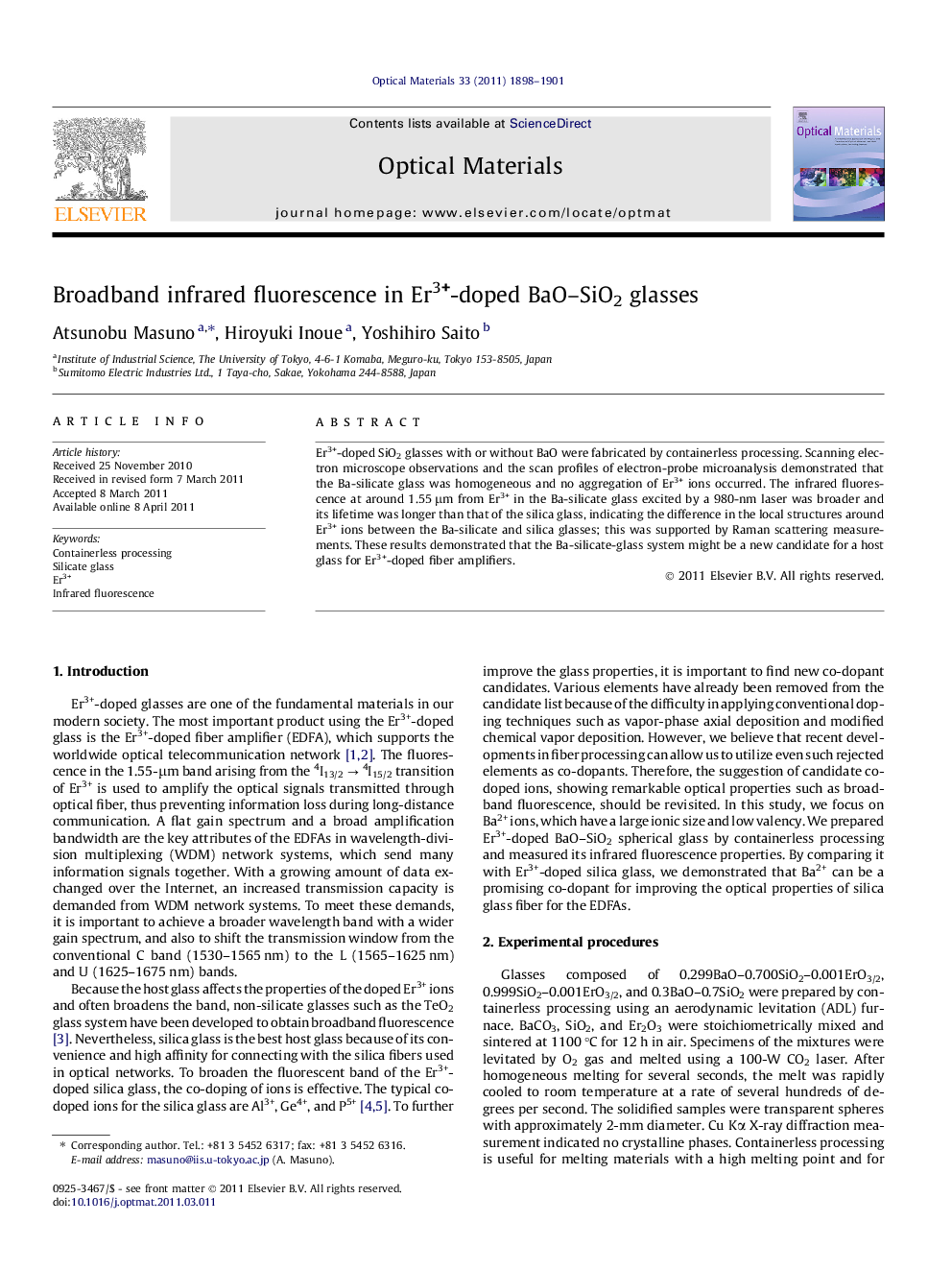| Article ID | Journal | Published Year | Pages | File Type |
|---|---|---|---|---|
| 1494803 | Optical Materials | 2011 | 4 Pages |
Er3+-doped SiO2 glasses with or without BaO were fabricated by containerless processing. Scanning electron microscope observations and the scan profiles of electron-probe microanalysis demonstrated that the Ba-silicate glass was homogeneous and no aggregation of Er3+ ions occurred. The infrared fluorescence at around 1.55 μm from Er3+ in the Ba-silicate glass excited by a 980-nm laser was broader and its lifetime was longer than that of the silica glass, indicating the difference in the local structures around Er3+ ions between the Ba-silicate and silica glasses; this was supported by Raman scattering measurements. These results demonstrated that the Ba-silicate-glass system might be a new candidate for a host glass for Er3+-doped fiber amplifiers.
► Er3+-doped BaO–SiO2 glass exhibited broadband fluorescence. ► The effective bandwidth and the lifetime increased by adding Ba+2 ions. ► The electronic dipole transition of the band was small. ► Raman scattering measurements indicated the generation of non-bridging oxygens.
